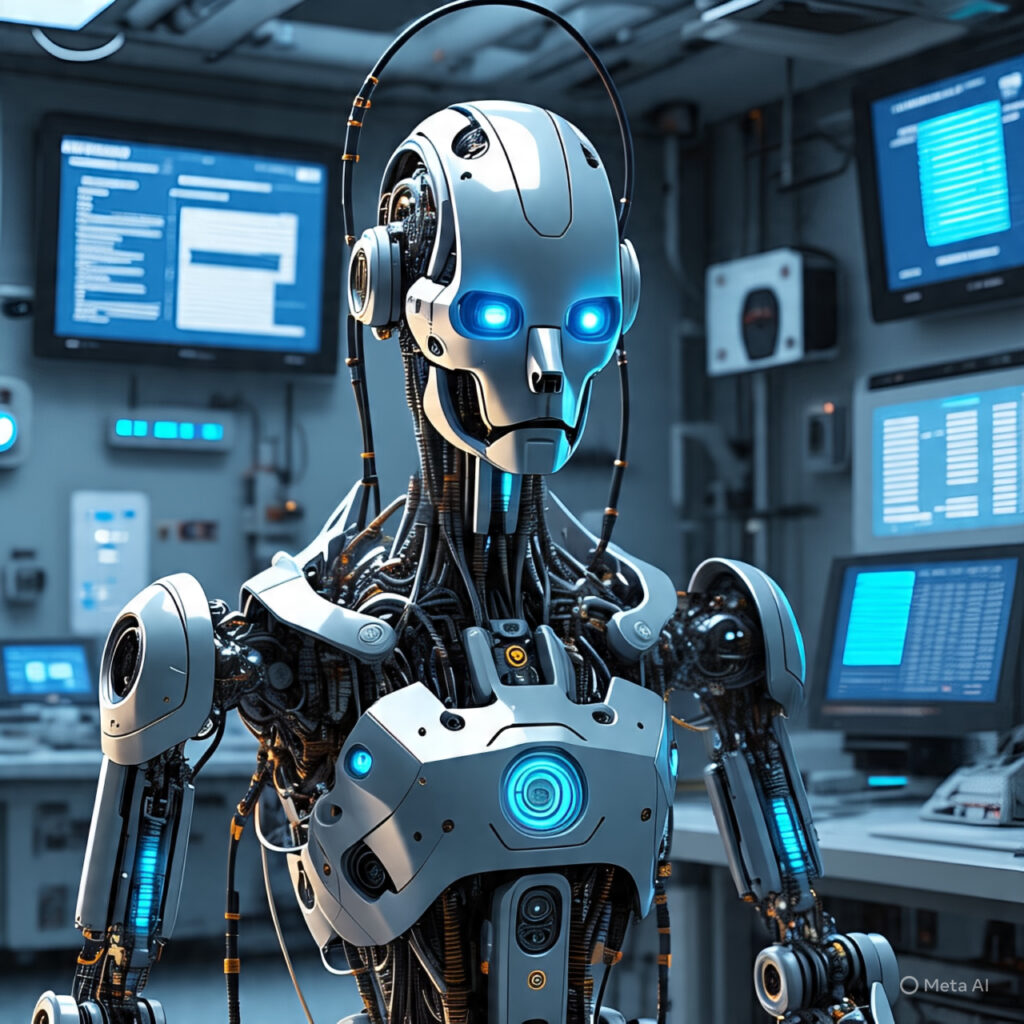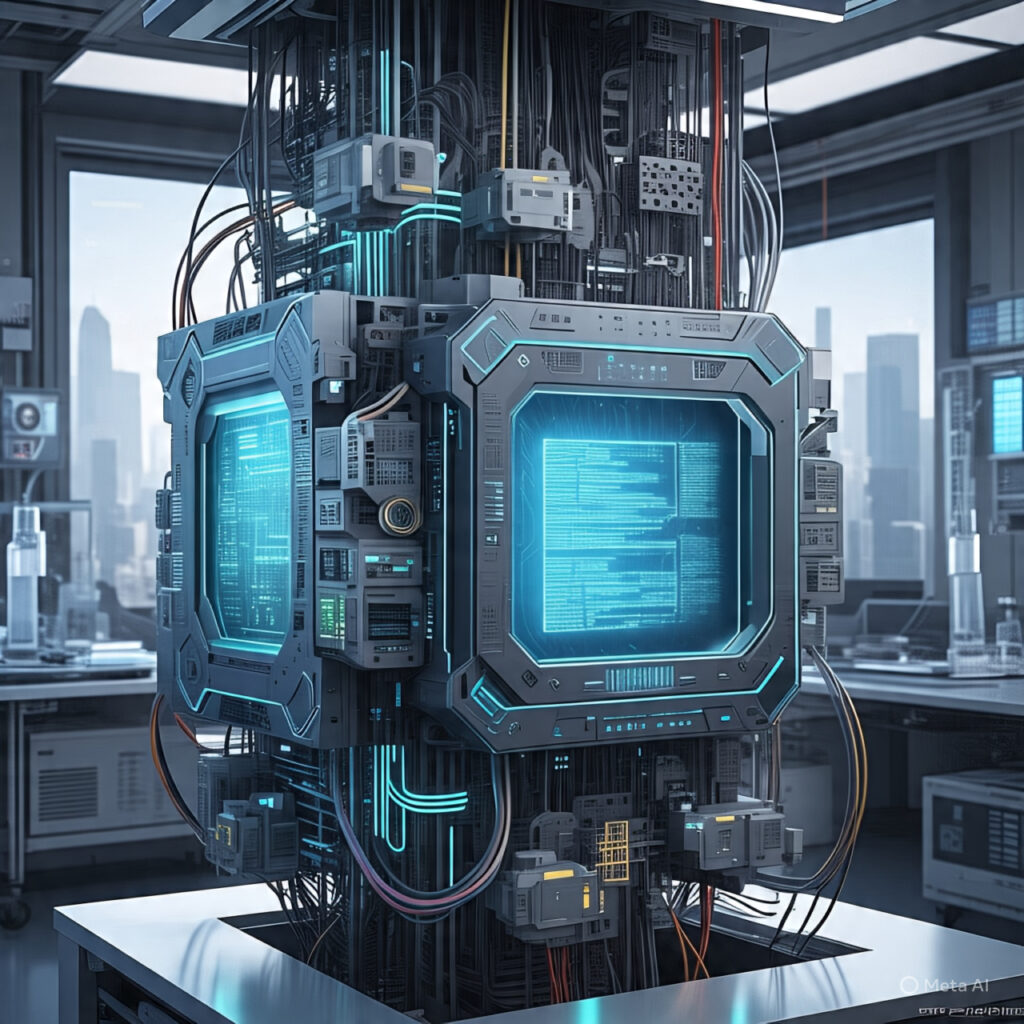
In an increasingly complex and interconnected world, the ability to quickly identify and resolve issues is paramount.
From maintaining robust IT infrastructure to ensuring patient well-being and optimizing industrial processes, efficient diagnostics and rapid resolution are critical.
Traditionally, these tasks have relied heavily on human expertise, which can be time-consuming, prone to error, and limited by scale.
However, the advent of Artificial Intelligence (AI) is ushering in a new era, transforming how we approach problem-solving.
AI-powered diagnostics and automated resolution are not just buzzwords; they represent a fundamental shift towards more intelligent, proactive, and efficient systems.
This blog post will explore the transformative power of AI in diagnosing problems and automating their resolution across various domains, highlighting its benefits, diverse applications, and the exciting future it promises.
The Transformative Benefits of AI-Powered Diagnostics
AI-powered diagnostic systems offer a multitude of benefits that significantly enhance efficiency and effectiveness across various sectors:
Enhanced Accuracy and Precision: AI algorithms, particularly those leveraging machine learning and deep learning, can analyze vast datasets with a level of detail and speed impossible for humans.
In medical diagnostics, AI-enhanced image analysis can significantly reduce errors and accelerate diagnostic processes, leading to quicker patient diagnoses [2].
Similarly, in IT, AI can identify subtle patterns and anomalies that might indicate an impending issue, often before it escalates into a major problem.
Increased Speed and Efficiency: The ability of AI to process and analyze data in real-time translates directly into faster diagnostic cycles.
This is particularly evident in IT Service Management (ITSM), where AI-powered Root Cause Analysis (RCA) automates the identification of root causes, drastically reducing the time to resolve incidents [3].
In industrial settings, AI-based equipment health monitoring systems can predict failures, saving time and expense by preventing downtime [5].

Videos are added as random thoughts 💭 💭….
Proactive Problem Solving and Predictive Capabilities:
One of the most significant advantages of AI is its predictive power.
By continuously monitoring systems and analyzing historical data, AI can forecast potential issues before they occur.
This shifts the paradigm from reactive troubleshooting to proactive problem prevention.
For instance, in remote patient monitoring, AI algorithms continuously analyze patient data to identify subtle changes in vital signs or symptoms that may indicate a deteriorating health condition, enabling early intervention [6].
Reduced Human Error and Workload: Automating diagnostic processes with AI minimizes the potential for human error, especially in repetitive or complex tasks.
This also frees up human experts to focus on more complex problems requiring critical thinking and nuanced decision-making.
In medical fields, AI is being explored to reduce the diagnostic workload, enhancing efficiency across various specializations [7].
Scalability and Consistency: AI systems can operate 24/7 without fatigue, providing consistent diagnostic capabilities across numerous systems or patients.
This scalability is crucial for large organizations or healthcare providers managing a high volume of cases.
Cost Reduction: By preventing downtime, optimizing resource allocation, and reducing the need for extensive manual troubleshooting, AI-powered diagnostics can lead to significant cost savings.
For network operators, AI-powered network diagnostics can accelerate root cause analysis and automate issue resolution, ensuring optimal network performance, minimal downtime, and cost savings [6].
Applications Across Industries
AI-powered diagnostics and automated resolution are finding widespread applications across a diverse range of industries, transforming operations and improving outcomes:
Information Technology (IT) and Cybersecurity
In the realm of IT, AI is revolutionizing how organizations manage and troubleshoot their complex systems.
AI-powered tools can analyze logs, network traffic, and system performance data in real-time to identify anomalies, predict outages, and pinpoint the root cause of issues.
For instance, AI agents are increasingly used for technical troubleshooting, helping to identify, diagnose, and resolve technical issues across various IT environments [2].
Companies are leveraging AI to analyze data in real-time, identify root causes, and predict potential issues before they occur, thereby revolutionizing IT troubleshooting [6].
In cybersecurity, AI plays a crucial role in threat detection and response.
AI algorithms can analyze vast amounts of network data to identify suspicious patterns, detect malware, and flag potential breaches.
Automated resolution mechanisms can then isolate affected systems, block malicious traffic, and even initiate remediation steps, significantly reducing the impact of cyberattacks.
Healthcare and Medical Diagnostics
AI-driven diagnostics are transforming healthcare by enhancing diagnostic accuracy and efficiency.
In diagnostic imaging, AI assists radiologists in analyzing X-rays, MRIs, and CT scans, helping to detect diseases like cancer at earlier stages with greater precision [1].
AI also plays a vital role in remote patient monitoring, where it continuously analyzes data from wearables and other sensors to detect subtle changes in vital signs or symptoms,
enabling early detection of adverse health events and prioritizing hospitalization [1].
This not only improves patient outcomes but also reduces healthcare costs.
Manufacturing and Industrial Operations
In manufacturing and industrial settings, AI is instrumental in predictive maintenance and quality control.
AI-powered systems can monitor the health of machinery and equipment, predicting potential failures before they occur.
This allows for scheduled maintenance, preventing costly downtime and extending the lifespan of assets [5].
For example, AI-based equipment health monitoring and prediction systems save time and expense by eliminating equipment failure and downtime [5].
In quality control, AI-driven computer vision systems can inspect products for defects with unparalleled speed and accuracy, ensuring consistent product quality and reducing waste.
Customer Service and Support
AI is also transforming customer service by enabling automated diagnostics and resolution of common customer issues.
Chatbots and virtual assistants powered by AI can understand customer queries, diagnose problems based on keywords and context, and provide instant solutions or guide customers through troubleshooting steps.
This reduces the burden on human support agents, allowing them to focus on more complex issues, and significantly improves customer satisfaction through faster resolution times.
Challenges and Considerations
While the benefits of AI-powered diagnostics and automated resolution are clear, their implementation is not without challenges:
Data Quality and Availability: AI systems are only as good as the data they are trained on.
Poor quality, biased, or insufficient data can lead to inaccurate diagnoses and ineffective automated resolutions.
Ensuring access to large, diverse, and high-quality datasets is crucial.
Complexity and Interpretability: Advanced AI models, particularly deep learning networks, can be complex and operate as ‘black boxes,’ making it difficult to understand how they arrive at a particular diagnosis or resolution.
This lack of interpretability can be a barrier to trust and adoption, especially in critical applications like healthcare.
Integration with Existing Systems: Integrating new AI solutions with legacy systems can be a significant technical and organizational hurdle.
Seamless interoperability is essential for AI to function effectively within existing workflows.
Ethical and Regulatory Concerns: The use of AI in diagnostics, especially in sensitive areas like healthcare, raises ethical questions regarding accountability, bias, and patient privacy.
Robust regulatory frameworks are needed to ensure responsible and ethical deployment of these technologies.
Human Oversight and Collaboration: While AI can automate many tasks, human oversight remains critical.
AI should be viewed as a tool to augment human capabilities, not replace them entirely.
The most effective solutions will involve a collaborative approach between AI systems and human experts.
The Future of AI-Powered Diagnostics and Automated Resolution
The future of AI-powered diagnostics and automated resolution is incredibly promising. We can expect several key trends to shape its evolution:
Increased Autonomy and Proactivity: AI systems will become even more autonomous, capable of not only diagnosing but also proactively resolving a wider range of issues without human intervention. This will lead to truly self-healing systems.
Explainable AI (XAI): Research into Explainable AI (XAI) will make AI models more transparent and interpretable, fostering greater trust and enabling human experts to understand and validate AI-driven decisions.
Edge AI and Real-time Processing: More AI processing will occur at the ‘edge’ – closer to the data source – enabling faster, real-time diagnostics and resolutions, particularly crucial for applications requiring ultra-low latency.
Cross-Domain Integration: We will see greater integration of AI diagnostic capabilities across different domains, leading to more holistic and interconnected problem-solving ecosystems.
For example, an AI system might diagnose a network issue that impacts a medical device, and then automatically trigger a resolution that considers both IT and healthcare protocols.
Personalized Diagnostics and Predictive Health: In healthcare, AI will enable highly personalized diagnostics based on an individual’s unique genetic makeup, lifestyle, and real-time physiological data, leading to even more precise and preventive care.
Digital Twins and Simulation: The use of digital twins – virtual replicas of physical systems – combined with AI will allow for highly accurate simulations of potential issues and their resolutions, enabling proactive optimization and risk mitigation.
Conclusion
AI-powered diagnostics and automated resolution are no longer futuristic concepts; they are here, transforming industries and improving our daily lives.
From ensuring the seamless operation of complex IT networks to revolutionizing medical diagnoses and optimizing industrial processes, AI is proving to be an indispensable tool for problem-solving.
While challenges remain, the continuous advancements in AI technology promise an even more intelligent, efficient, and proactive future where issues are identified and resolved with unprecedented speed and accuracy.
Embracing these innovations will be key to navigating the complexities of our modern world and unlocking new levels of operational excellence.
References
[1] AI in diagnostic imaging: Revolutionising accuracy and efficiency. (n.d.). ScienceDirect.
[2] AI-Powered Root Cause in ITSM. (2025, February 6). EasyVista
[3] Embracing AI-Driven Diagnostics: Transforming Remote IT Problem Solving. (2023, October 16). Prescient Solutions.
[4] AI-Powered Network Diagnostics. (n.d.). *B-YOND*.
[5] AI equipment health monitoring and prediction technology. (n.d.). *ISA*.
[6] AI Agents for Technical Troubleshooting 2025 Ultimate Guide. (n.d.). *Rapid Innovation*. ()
[7] Reducing the workload of medical diagnosis through artificial intelligence: A systematic review. (2025, February 7). *PMC*.
